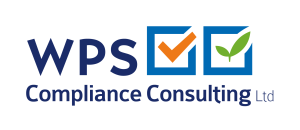As the construction industry shifts toward more sustainable practices, pre-demolition audits have become a critical step in reducing waste, recovering valuable materials, and ensuring compliance with UK environmental laws. These audits not only support the circular economy but also help construction firms avoid regulatory pitfalls and unlock new efficiencies.
In this blog, we’ll explore the key regulations governing pre-demolition processes in the UK, outline how to ensure compliance with waste management laws, and highlight the growing role of the circular economy in demolition.
UK Legislation Surrounding Demolition and Material Recovery
Pre-demolition audits in the UK are shaped by several regulatory frameworks aimed at minimizing environmental harm, reducing landfill use, and maximizing material reuse. Key legislative instruments include:
The Waste (England and Wales) Regulations 2011
These regulations require businesses to apply the Waste Hierarchy—prevention, reuse, recycling, recovery, and disposal—when handling waste. Before any demolition, site operators must consider whether materials can be reused or recycled rather than disposed of.
Environmental Protection Act 1990
This foundational law sets out the “duty of care” for waste producers, mandating that all waste be handled responsibly from creation to disposal. Construction firms must ensure that:
- Waste is stored securely on-site.
- Proper documentation (e.g. waste transfer notes) is maintained.
- Only licensed carriers and disposal sites are used.
Construction (Design and Management) Regulations 2015 (CDM 2015)
These regulations require early planning to manage health, safety, and environmental risks. Under CDM 2015, pre-demolition information, including materials inventories and asbestos surveys, must be compiled and shared with contractors to support safe and sustainable deconstruction.
Site Waste Management Plans (SWMPs)
Although no longer mandatory in England since 2013, SWMPs remain best practice in many major projects and public sector tenders. They require documentation of expected waste volumes, proposed management methods, and recycling targets, often informed by pre-demolition audits.
Ensuring Compliance with Waste Management Laws
Falling foul of waste regulations can result in fines, project delays, or reputational damage. Here are key steps to ensure your demolition project remains compliant:
Conduct a Pre-Demolition Audit
A detailed audit will identify:
- Hazardous materials (e.g. asbestos, lead paint)
- Valuable or recyclable materials (e.g. steel, timber, brick)
- Waste streams and volumes
Prepare Proper Documentation
Ensure that:
- All waste streams are recorded.
- Waste transfer and consignment notes are complete and accurate.
- Licences for waste carriers and receiving facilities are verified.
Segregate Materials On-Site
Material separation at source improves recycling rates and ensures compliance with the Waste Framework Directive, which encourages high-quality recycling over mixed waste disposal.
Engage with Licensed Waste Management Providers
Partner with providers who can help you meet legal and environmental standards, offering traceability for materials recovered or disposed of.
The Role of the Circular Economy in Demolition
Demolition no longer marks the end of a building’s life—it’s the beginning of a new lifecycle for its materials. The circular economy seeks to close the loop, ensuring that resources remain in use for as long as possible. Here’s how pre-demolition audits contribute:
Material Recovery and Reuse
Bricks, steel, timber, and concrete can often be reused directly or processed into new products. For example:
- Cleaned bricks can be resold or reused in restoration projects.
- Structural steel can be recertified and reused, saving both carbon and cost.
Reduced Demand for Virgin Materials
By reusing recovered materials, developers can reduce the need for raw resource extraction—cutting emissions, transportation costs, and ecological damage.
Embodied Carbon Reduction
Construction and demolition waste accounts for around 60% of total UK waste. Reuse and recycling reduce the embodied carbon of future projects—vital for reaching net-zero goals.
Design for Deconstruction
Some progressive projects now incorporate design for disassembly, making future material recovery even easier. Pre-demolition audits help evaluate how previous design choices support or hinder circular goals.
Real-World Application: The Gateway Project, London
This award-winning redevelopment reused over 90% of demolition materials on-site. The pre-demolition audit guided selective dismantling, enabling the reuse of brick, concrete, and metal in new construction. This approach:
- Reduced landfill waste.
- Cut material procurement costs.
- Aligned with circular economy principles.
Conclusion
Pre-demolition audits are more than just a regulatory formality—they’re a gateway to sustainable construction, regulatory compliance, and financial efficiency. By aligning with UK waste regulations, prioritizing material recovery, and embracing circular economy principles, construction firms can turn demolition into an opportunity rather than a burden.
As regulations evolve and sustainability becomes a core business priority, investing in thorough pre-demolition audits isn’t just smart—it’s essential.


